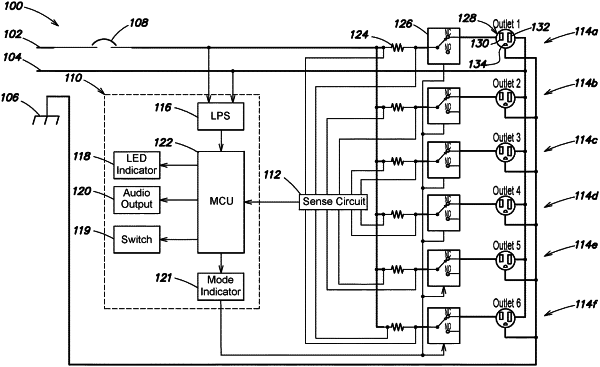| CPC H01R 13/713 (2013.01) [H01R 13/6616 (2013.01); H01R 13/6683 (2013.01); H01R 13/7175 (2013.01); H01R 25/003 (2013.01); H02H 3/033 (2013.01); H02H 3/08 (2013.01)] | 13 Claims |

|
1. A power distribution device comprising:
an input configured to receive input power;
a plurality of outputs, each output of the plurality of outputs being configured to provide output power and being coupled to the input, the plurality of outputs including a first output and a second output;
a plurality of switching devices, each switching device of the plurality of switching devices being coupled to a respective output of the plurality of outputs, the plurality of switching devices including a first switching device coupled to the first output and a second switching device coupled to the second output; and
a controller coupled to each switching device of the plurality of switching devices, the controller being configured to:
receive, at a first time, first power information indicative of the output power provided by each output of the plurality of outputs;
determine based on the first power information that a first overcurrent condition exists;
determine, based on a priority list responsive to determining that the first overcurrent condition exists, that the first output is a lowest-priority output and the second output is a higher-priority output;
disable, responsive to determining that the first overcurrent condition exists and responsive to determining that the first output is the lowest-priority output, the first switching device based on the priority list;
receive, at a second time, second power information indicative of the output power provided by each output of the plurality of outputs;
determine based on the second power information that a second overcurrent condition exists; and
disable, responsive to determining that the second overcurrent condition exists and responsive to determining that disabling the first switching device would not eliminate the second overcurrent condition, the second switching device to eliminate the second overcurrent condition based on a dynamic determination without disabling the first switching device.
|